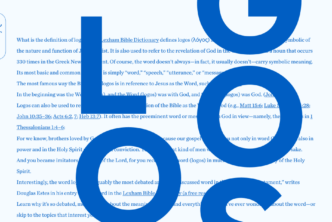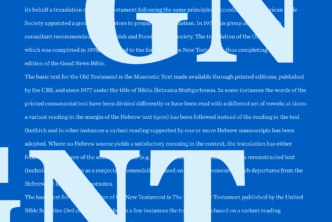Approximately one third of the Hebrew Bible is poetry and needs to be interpreted with a sensitivity to the devices used by Hebrew poets. However, most books covering the grammar and syntax of the Hebrew language are devoted almost entirely to prose, and leave investigations of poetry to more specialized books.
Those using Logos Bible Software to study the Hebrew Bible have a great selection of these prose grammars available to them, from Waltke and O’Connor’s An Introduction to Biblical Hebrew Syntax and the classic Gesenius-Kautzsch-Cowley Hebrew Grammar to Joüon-Muraoka’s A Grammar of Biblical Hebrew and Christo van der Merwe’s A Biblical Hebrew Reference Grammar. But until now, there have been few works made available for studying Hebrew poetry. Happily, the news isn’t all grim: a number of collections are now listed on the pre-publication page that can round out your Hebrew library nicely.
The Hebrew Studies Collection, consisting of seven volumes from the Journal for the Study of the Old Testament Supplement Series, includes no less than four books on Hebrew poetry: Traditional Techniques in Classical Hebrew Verse, Classical Hebrew Poetry, A Guide to its Techniques, Directions in Biblical Hebrew Poetry, and Structural Analysis of Biblical and Canaanite Poetry. Parallelism, word pairs, figurative language, metre and a host of other rhetorical and structural devices are explored in this collection, making it an excellent first stop for exploring Hebrew poetics.
Word Order Variation in Biblical Hebrew Poetry, by Nicholas Lunn. Changing the expected word order is one method the biblical authors use to highlight or emphasize certain aspects of their sentences. Word order has oft been studied for Hebrew prose, but this book explores how those dynamics play out in the poetic genre.
The BHS Helps Collection features Luis Alonso Schokel’s A Manual of Hebrew Poetics. The manual is not primarily a reference book but rather a volume of initiation into the practice of analysis. Among the poetic techniques discussed are sound and sonority, rhythm, imagery, figures of speech, dialogue and monologue, development and composition.
Biblical Languages: Reference Grammars and Introductions (19 vols.) includes George Buchanan Gray’s classic The Forms of Hebrew Poetry, which includes extensive discussions of parallelism, rhythm, and alphabetic acrostics. Also included is Wickes’ Two Treatises on the Accentuation of the Old Testament, a study in the cantillation system of the Hebrew Bible.
I encourage those interested in studying the other third of the Hebrew Bible to take a look at some of these collections.





